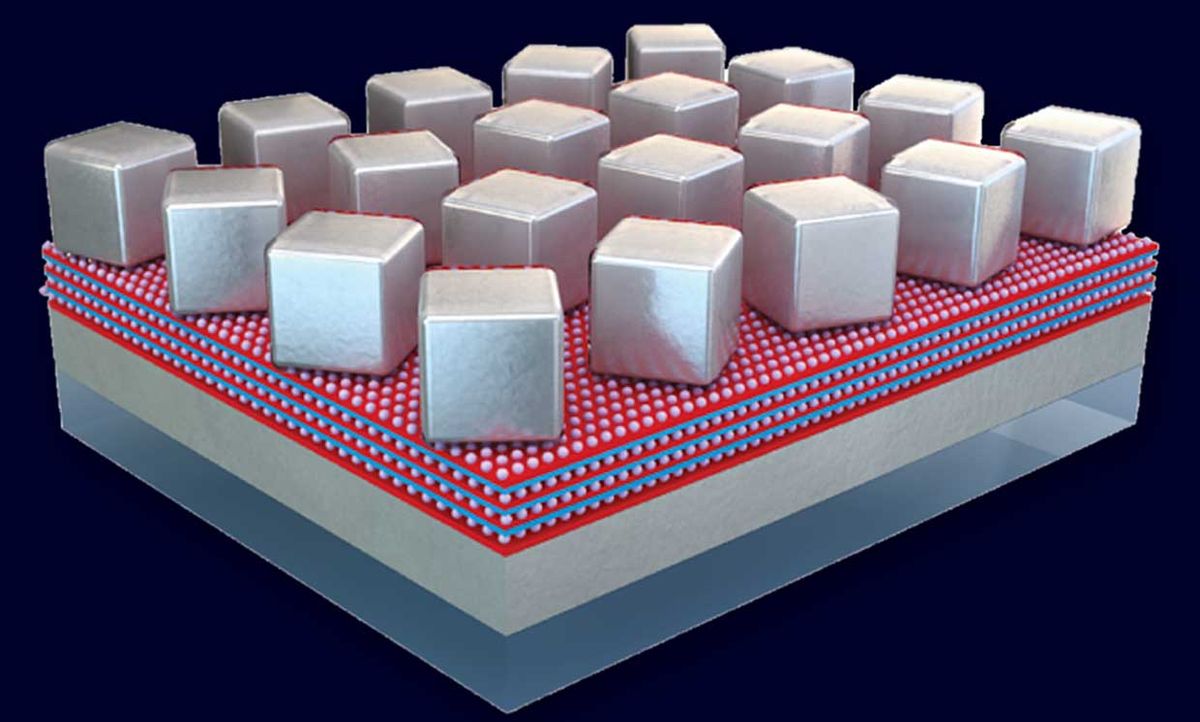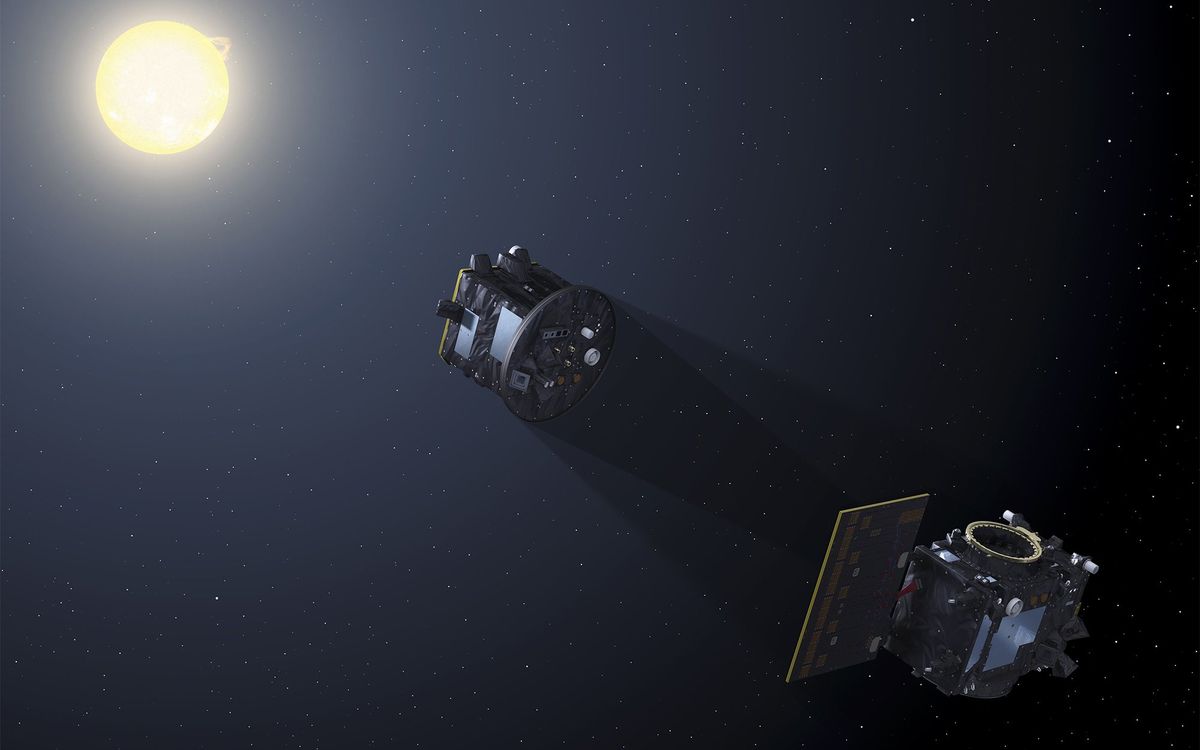It’s a simple truth that higher frequencies can inherently carry more data than lower frequencies. The more times an electromagnetic wave cycles in a second, the faster it can be modulated to pack in information. Which is why free-space optical communication is such a hot research topic: Visible wavelengths of light can carry more data than radio waves.
The problem is that optical wavelengths are harder to transmit and receive than are radio waves. For radio waves, omnidirectional antennas can do the job on either end. Optical transmission techniques require lasers or LEDs and receptors in line-of-sight set-ups that are very vulnerable to becoming mis-aligned.
Researchers at Duke University, in collaboration with Facebook’s Connectivity Lab, have taken preliminary steps in developing an optical technique that combines the best of both worlds: They’ve created an omnidirectional antenna that can receive signals in the optical range.
The work, described in a paper published last month in Optica, started at the Connectivity Lab, which conducts a broad range of research aimed at closing broadband access gaps. The lab had set out to develop a transmission technique equivalent to what happens with radio antennas, but for optical frequencies.
“Their whole idea was, if we can collect from a large area like a satellite dish, and then focus it in, we can get a pretty high signal from that,” says Andrew Traverso, a postdoctoral researcher at Duke who contributed to the research. “And so they designed this really novel antenna using fiber optics, kind of like a weave of fiber optics, that they shaped into a bowl.”
The Connectivity Lab researchers embedded a fluorescent dye within the fibers so that, regardless of the direction from which light hit the “bowl,” it would hit the dye. That would cause the dye to fluoresce, creating a second light signal within the fiber itself. The fiber would then direct that second signal along its length and to a final receiver.
The Connectivity Lab hit a snag, however: They couldn’t figure out how to get the fluorescent dye to fluoresce fast enough. “It was on the order of nanoseconds, if not longer,” says Traverso. “If you do the inverse of that, that’s, at best, maybe a gigahertz. You want to be able to push that to much faster frequencies; you want to be able to modulate that light as quickly as possible.”
So the Connectivity Lab turned to Maiken Mikkelsen, a physicist at Duke and an expert in plasmonics—the science of generating and detecting the electromagnetic waves created by “surface plasmons” (essentially free electrons) in metals interacting with light. The field took its inspiration from the more established field of photonics, which has similar goals, except with photons rather than surface plasmons.
Mikkelsen’s lab had previously done work with small fluorescent nanocubes that could give off ultra-fast emissions in the range of picoseconds. The Connectivity Lab was hoping Mikkelsen could build on that work to help solve its problem.
Mikkelsen’s lab at Duke ultimately realized that a big challenge for them would be translating their nanocube work to larger scales. Truthfully, however, the phrase “larger scales” could be misleading: Plasmonics research is typically focused on areas the size of a few square nanometers. The goal instead was to make this practical for an area with a footprint of a few square millimeters, or potentially a square centimeter—in other words, about the size of an antenna in a typical smartphone.
It’s easier to construct and test plasmonic antennas at the nanometer scale because each antenna is so small and so precisely crafted. If one or more of the antennas doesn’t work, it can ruin an entire array. The odds of individual antennas being defective naturally rises if you attempt to create a millimeter-scale or centimeter-scale system.
Mikkelsen’s group came up with new fabrication techniques to construct nanometer-scale antennas in one dimension while still working over a relatively larger area to create the entire array in the other dimensions. Mikkelsen says that traditionally, these structures are built using electron beam lithography that allows very fine detail, but wouldn’t scale. Instead, they resorted to creating a deposition technique to build up the antennas layer by layer .
The result was a millimeter-scale antenna array that can receive and redirect optical signals with 30 percent efficiency—both larger and more efficient than any previous effort.

The results are still extremely rudimentary. However, Mikkelsen and Traverso already see potential applications in biosensing, imaging, and, of course, optical communications.
They’re hesitant to speculate on how fast an optical communications system utilizing such an antenna might eventually be, given that fundamental questions like what the ideal light source or ideal detector might look like are still unknown. But it’s clear that, in order to compete with the cutting-edge in radio, it would have to be fast. Radio systems are already pushing 100 gigabytes per second. If any optical communications system ultimately stems from the groundwork Duke and the Connectivity Lab have already laid, it doesn’t seem unreasonable to expect it to exceed one terabit per second or more.
Unfortunately, the Connectivity Lab is no longer directly pursuing this research, but Mikkelsen and her lab haven’t given up on it. They’re already thinking about what comes next. Currently, that means developing techniques to better condense the light once it’s been captured and emitted by the fluorescent dyes, as well as ensuring that the end detector is as precise as possible.
Michael Koziol is an associate editor at IEEE Spectrum where he covers everything telecommunications. He graduated from Seattle University with bachelor's degrees in English and physics, and earned his master's degree in science journalism from New York University.



